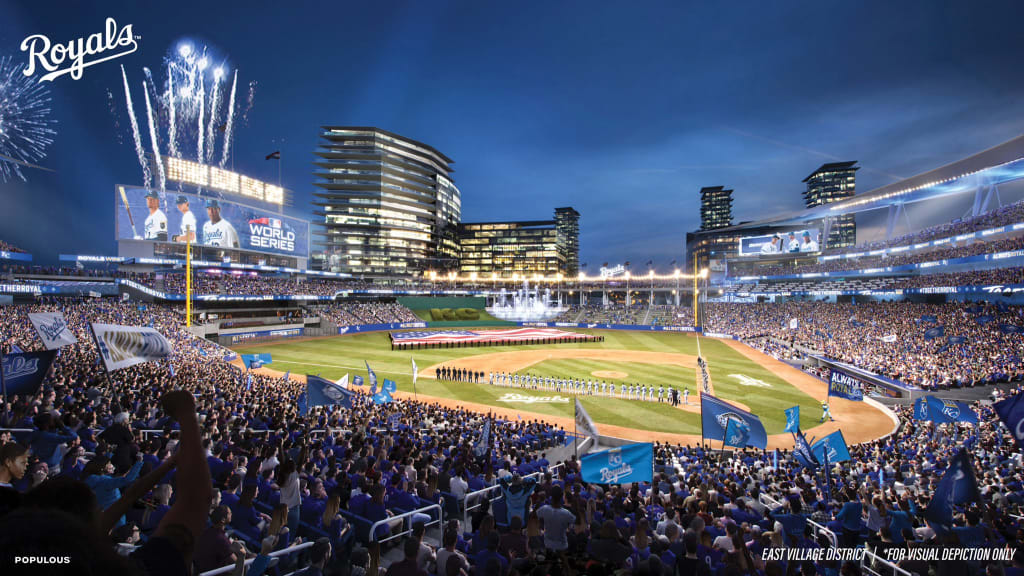
The Royals’ vision for a new stadium took another step forward on Tuesday when the team unveiled renderings and economic data for the two ballpark and entertainment district sites being considered, releasing images and details of what the project would look like at each site -- one in East Village in downtown Kansas City and one in North Kansas City.
“We’re trying to show where we are in the process, trying to be transparent about how we’re going about making a decision, what we’re seeing,” Royals president of business operations Brooks Sherman said. “We’ve got work to do at a number of fronts to get to our decision on this, but we thought it was the right time here as we’ve gotten both of these developed. We thought it was the right time for the transparency of both and to show the community what could be no matter where we go.”
At both sites, the organization has estimated the development would cost more than $2 billion, split between the stadium and a surrounding ballpark district. The ownership group has pushed for a public-private partnership, asking for an extension of the current 3/8 cent sales tax from Jackson County taxpayers that is currently used to maintain the Truman Sports Complex. The Royals estimate their share of that tax would be around $300-350 million.
If the Royals move to North Kansas City in Clay County, they would ask for a similar arrangement.
Sarah Tourville, the Royals’ executive vice president and chief commercial and community impact officer, said the goal is still for the Royals to choose between the two sites by the end of September. They would like the new stadium to be built in time for Opening Day 2028.
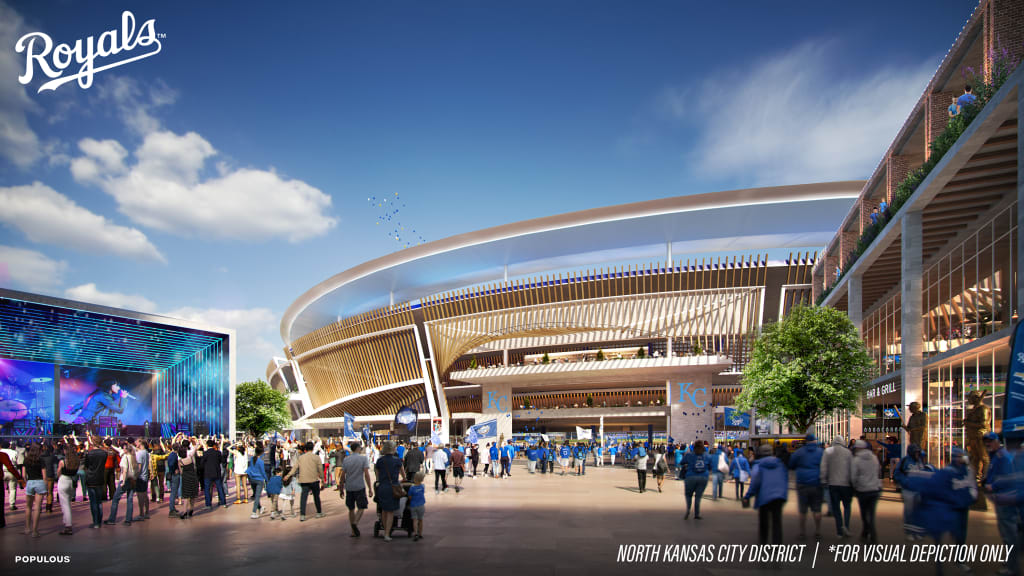
On Tuesday, Earl Santee, a senior principal and global chair of Populous -- the architecture firm that has designed several current Major League ballparks -- detailed the desired features of a new Royals’ ballpark and what each site offers.
The Royals envision the new stadium having 34,500 to 35,000 fixed seats, with space for another 3,500 fans for a standing-room-only experience. That would give the stadium a total capacity of around 38,000. In both ballpark renderings, the city’s iconic fountains were included in the design. The renderings also had Royals Park as the name on each ballpark, but naming rights discussions have not been held yet.
Kauffman Stadium is named after Ewing Kauffman, the team’s founder and first owner.
“There’s a way to honor Mr. Kauffman,” Sherman said. “We haven’t, honestly, gotten that far yet, but you can bet there’s certainly a way to honor him, and we will do everything we can to do that. But there’s economics that go into those things, too, and you’ve seen that throughout the league.”
More details can be found on the Royals’ ballpark district site, but here is a rundown of what was detailed Tuesday:
East Village
The Royals are looking at 27 acres of land bounded by Eighth Street to the north, 12th Street to the south, Charlotte Street to the east and Cherry Street to the west.
“It’s a very dense development,” Santee said. “It will allow us to fill in really the empty part of downtown. … Its purpose would be to attract local businesses and let them thrive at this location. While there may be residential and other retail, it will have a commercial focus.”
Included in the renderings was the ballpark, along with team offices in center field, a hotel/conference venue across the street from the outfield, an event plaza for an entertainment venue outside the ballpark and retail shops and restaurants along Cherry Street.
“As you can see, it’s quite a bold vision of what could happen in downtown Kansas City,” Santee said. “... It is important that we, in this development, integrate it into the district and downtown. It’s intended to harmonize with the Power and Light district and existing downtown development.”
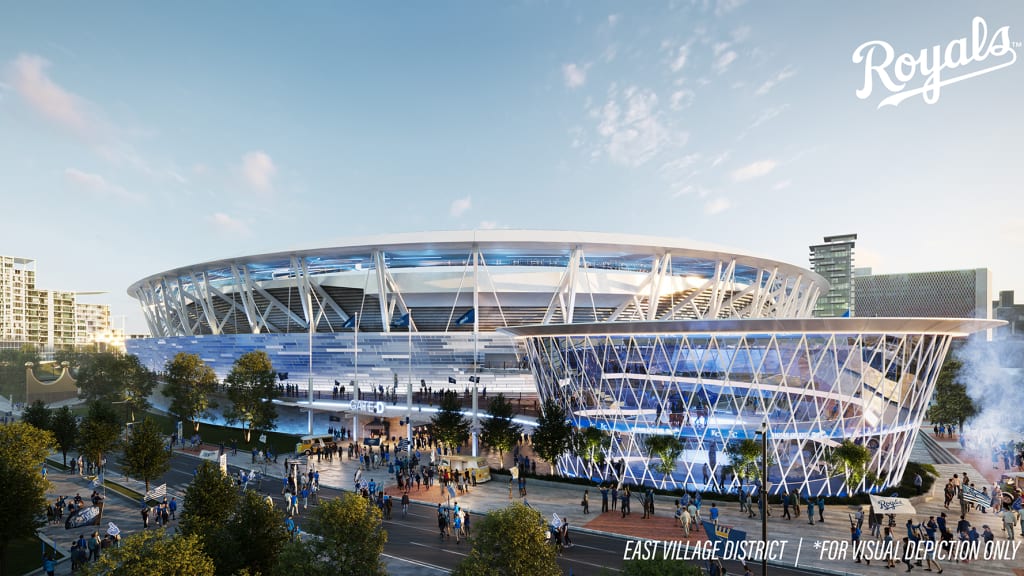
Santee said the ballpark would be situated in a way for people to be able to walk by and look inside the gates to see what’s going on, whether it’s a game, concert or other event. The Royals also are envisioning a 4,000-person entertainment venue outside the ballpark. On Cherry Street, there would be retail, entertainment venues and restaurants that “would be functioning and active 365 days a year,” Santee said.
Included in the renderings was a 10th Street pedestrian bridge over Interstate 70 to the Paseo West district. As for parking, Santee said the Royals are planning to build new parking at both sites that would supplement existing parking, but there are about 4,000 spaces to be built at the East Village site.
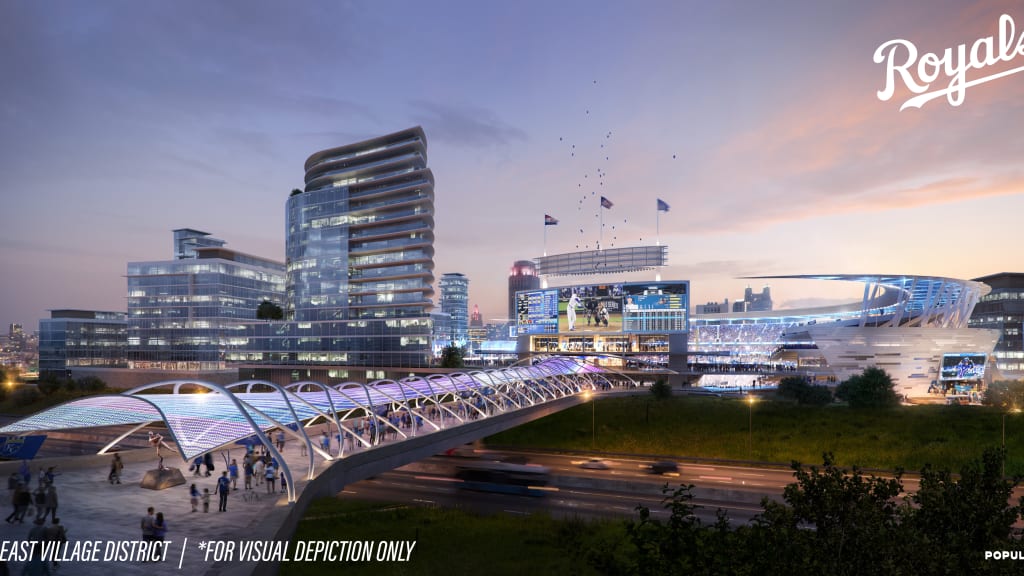
North Kansas City
In Clay County, the Royals are looking at a 90-acre piece of land that is of lower scale and more horizontal in nature. It is bounded by Armour Road to the north, 16th Street to the south, Interstate 29 to the east and Eerie Street to the west.
“Our purpose would be to activate that district with housing and other things, but the real main focus of its development will be residential,” Santee said. “... We’re trying to transform a district. Trying to create a district by giving it a place and substance to its development. The idea is to bring a lot of people to North Kansas City that would love to work and live there.”
The development includes the ballpark in the middle of the district, along with a hotel and exhibition center in the outfield. Two bridges would come directly from the hotel into the ballpark, and there is also a plaza area in between the exhibition center and ballpark.
“We want transparency in the outfield,” Santee said. “We want people to know when a baseball game is going on, or if there’s something else going on in the field. It’s important for us that the activation allows us to make this usable for 365 days a year.”
The district rendering also includes a 4,000-foot performance venue along Armour Street and retail entertainment, as well as housing above that.
The Royals are in discussion with the city and state about infrastructure costs and projects at both sites, but Sherman said there will be more work to be done in North Kansas City.
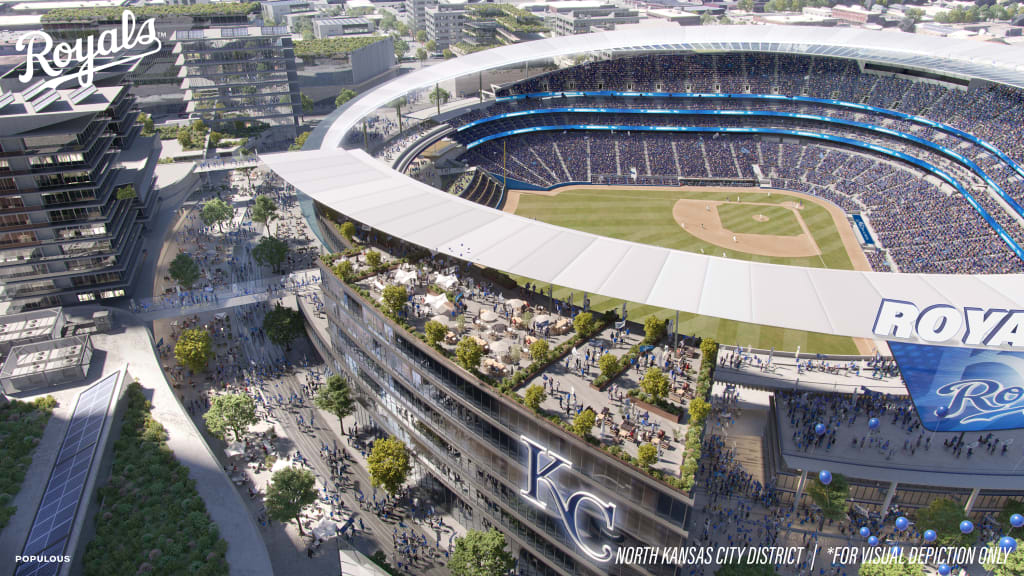
Economic impact
HR&A Principal Imran Aukhil presented the firm’s economic study of what the new ballpark and surrounding district could bring to Kansas City. According to that information, the one-time construction of the project will spur at least 2,000 jobs, $1.4 billion in labor income and $2.8 billion in economic output.
In the first year of stadium operation, a new ballpark district -- in either site -- has the potential to provide $185 million in economic output, including $117 million from revenue generated by the new gameday experience and other events, and $68 million from increased spending from visitors traveling to games.
The Royals also contend that a new ballpark district has the potential to provide 2,200 onsite office jobs, $200 million in annual labor income from these new jobs and $500 million in annual economic output from surrounding district operations.
